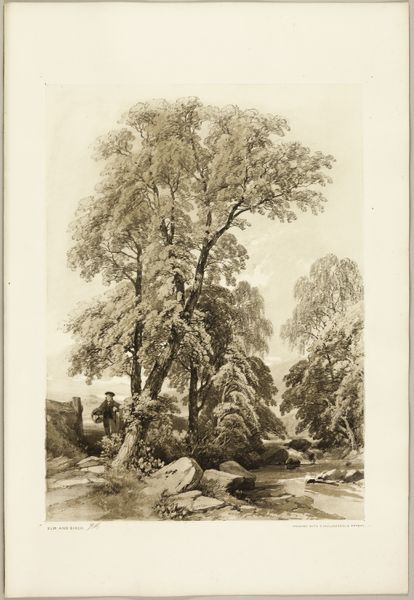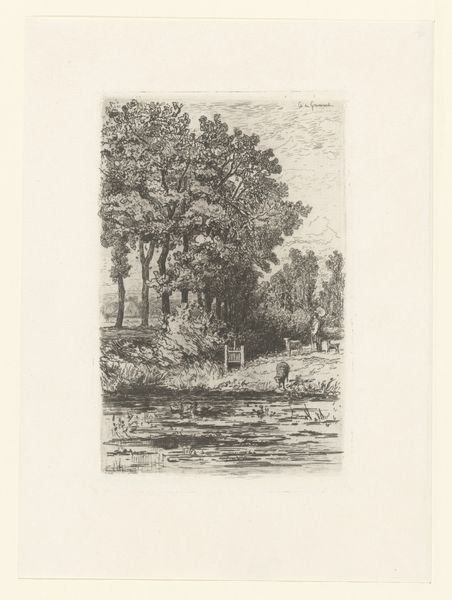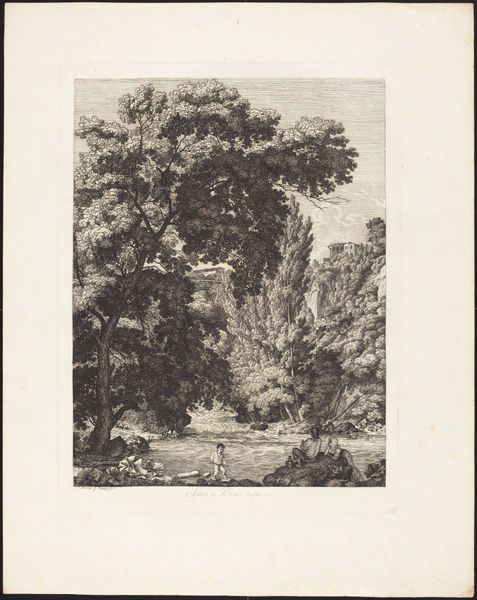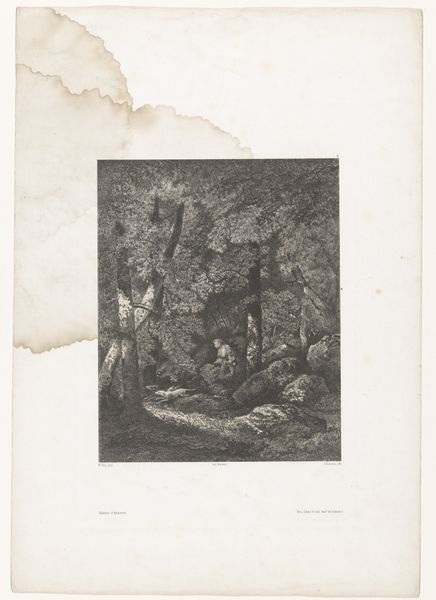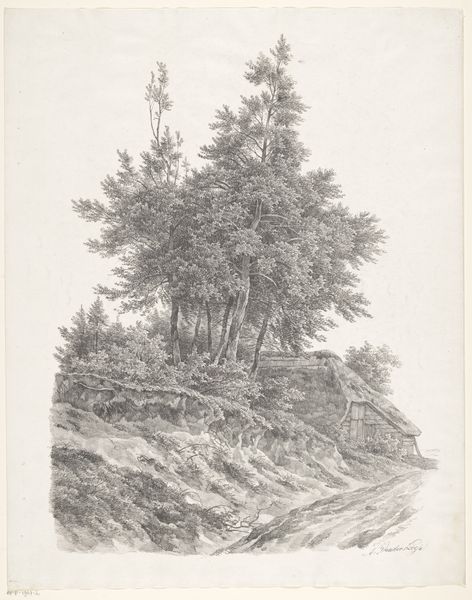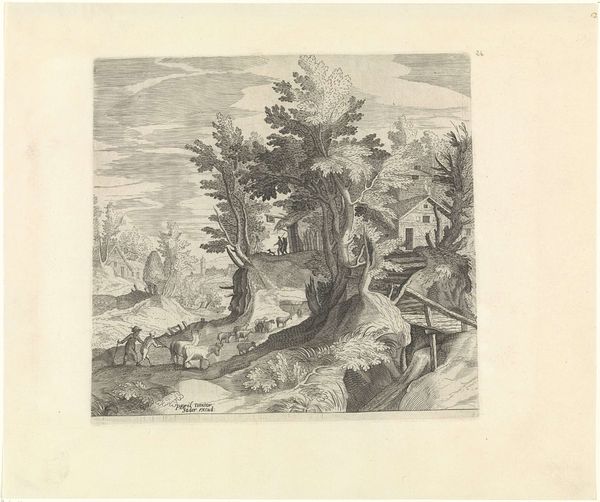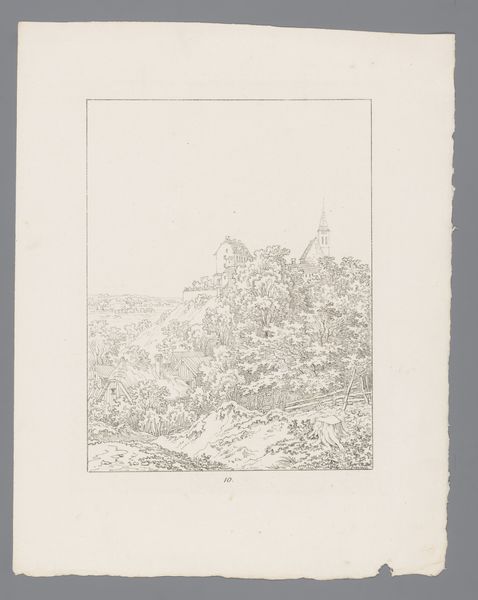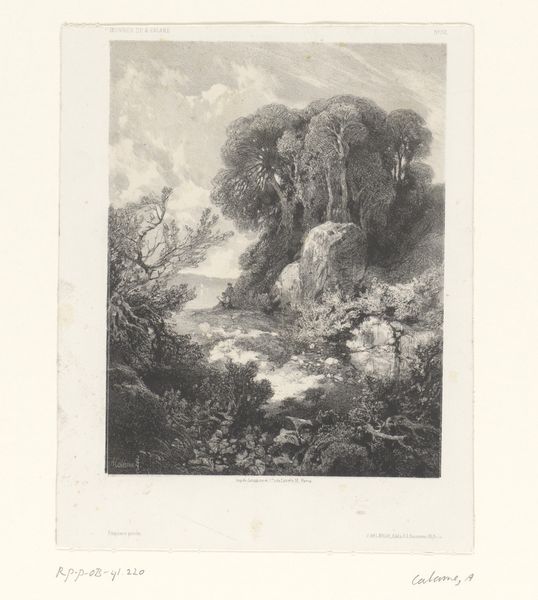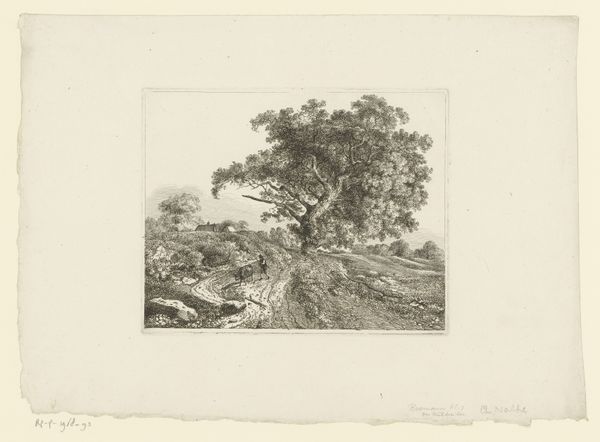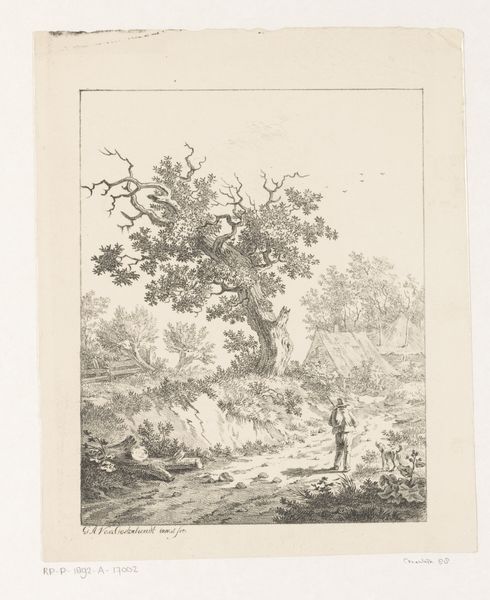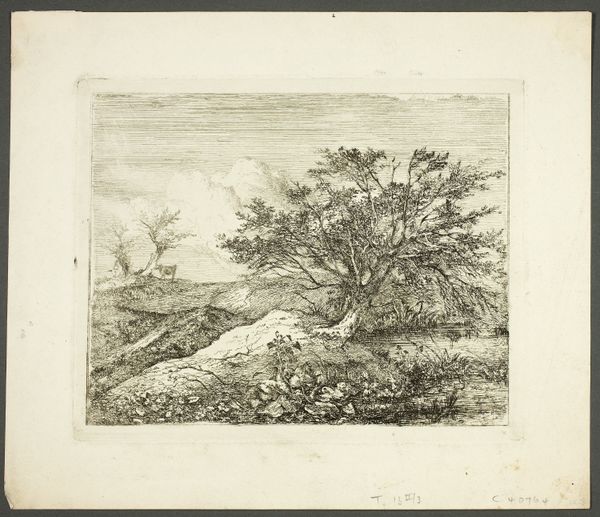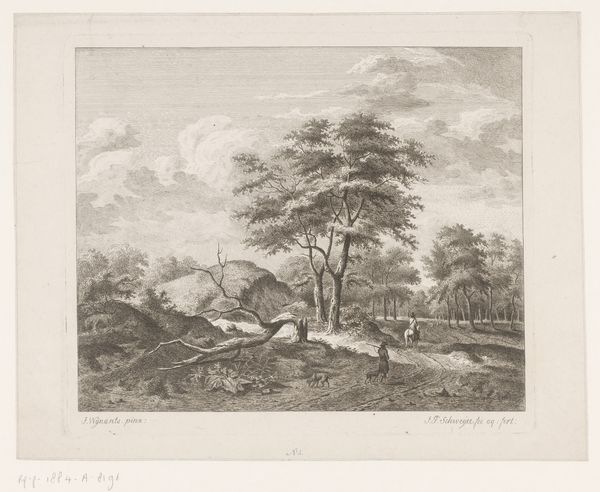
drawing, print, etching, paper
#
photo of handprinted image
#
drawing
#
aged paper
#
pale colours
#
ink paper printed
# print
#
etching
#
pencil sketch
#
light coloured
#
old engraving style
#
white palette
#
paper
#
france
#
repetition of white colour
#
watercolor
Dimensions: 178 × 117 mm (plate); 186 × 125 mm (primary support); 302 × 223 mm (secondary support)
Copyright: Public Domain
This print of birches and oaks was made by Henri-Joseph Harpignies, using a process called etching. Think of etching like drawing, only with acid. Harpignies would have coated a metal plate, likely copper, with a waxy substance, then scratched away lines to reveal the metal beneath. The plate was then submerged in acid, which bit into the exposed lines. After cleaning off the wax, the plate was inked, and wiped clean. The ink remained only in the etched lines, and when pressed against paper, the image was transferred. The technique is incredibly direct, registering the artist's hand. Look closely, and you can see the subtle variations in line weight, a direct result of the pressure Harpignies applied. Because the copper plate can be used to make multiple impressions, etching sits in an uneasy relationship to labor. Each print is original, yet infinitely reproducible; a perfect medium for the industrial age. So, next time you encounter a print, remember the labor involved in its making, and consider how these processes shape the artwork's cultural significance.
Comments
No comments
Be the first to comment and join the conversation on the ultimate creative platform.
